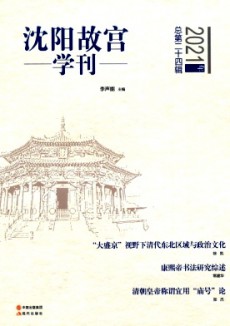故宫导游词大全11篇
时间:2022-10-26 13:54:27绪论:写作既是个人情感的抒发,也是对学术真理的探索,欢迎阅读由发表云整理的11篇故宫导游词范文,希望它们能为您的写作提供参考和启发。

篇(1)
故宫博物院,又名紫禁城,位于北京市中心,今天人们称它为故宫。它玲珑剔透,造型别致,是中国古建筑中的杰作。
游客们,现在我们来到了太和殿。太和殿为故宫三大殿之首,建在5米高的汉白玉台基上,台基四周矗立着雕龙石柱。走近太和殿,您就会发现皇后居住的地方,里面都是龙椅、龙椅还有沥粉金漆的龙柱。
游客们,我们继续往前走,现在来到的是中和殿,中和殿在太和殿之后,是故宫三大殿之一。该殿是一座单攒尖顶的方形殿。黄琉璃瓦四角攒尖顶,是皇上生活的地方。
再往里走就是保和殿,保和殿位于中和殿之后,是故宫三大殿之尾。保和殿东西两侧的房子现该为历代艺术陈列馆,陈列有从原始社会到清代月六千年的中华艺术瑰宝。
再向纵深行进就是御花园,占地面积一万一千平方米,以钦安殿为中心,是皇上的后花园。
各位游客,我们今天的游览就要结束了。非常高兴能和大家度过这段美好的时光。对我今天的导游有什么建议或要求,请提出宝贵意见,我一定尽力改正。祝大家玩的愉快。谢谢!
北京故宫导游词400习(二)
各位游客大家好,很高兴成为你们的导游,我叫***,大家叫我陈导或小安都可以,我会尽自己全力为你们服务。
故宫位于北京市城区中心,是明、清两代的皇宫,是当今世界上现存规模最大、建筑最雄伟、保存最完整的古代皇家宫殿。故宫又叫紫禁城。紫禁城是中国五个多世纪以来的最高权力中心,它以园林景观和容纳了家具及工艺品的9000个房间的庞大建筑群,成为明清时代中国文明无价的历史见证。1987年,北京故宫被联合国教科文组织列入《世界遗产名录》。
北京故宫有很多古老的殿,有太和殿、中和殿、保和殿……
现在我们来到了故宫中最重要的院落--——太和殿及其广场,这里就是皇家举行盛大典礼的地方。太和殿象征皇权的至高无上,太和殿俗称金銮殿,是我国现存木结构大殿的杰出典范之作。太和殿始建于公元1420年,当时叫奉天殿。后来,该叫皇极殿。清顺治皇帝登基后,重修三大殿,并将皇极殿改为太和殿。
篇(2)
大家好!首先请允许我代表沈阳市全体市民对各位的到来表示热烈欢迎!今天我为大家介绍的就是沈阳的风景名胜之一的“沈阳故宫”。
沈阳故宫占地6万多平方米,有楼台殿阁各式建筑70余座,由20多个院落组成,总计房屋300多间。故宫按自然布局分为中路、东路和西路三部分。
中路:是太宗皇太极时期的大内宫阙。南端是大清门,也是故宫的正门。向北依次是崇政殿、凤凰褛、清宁宫,它们都排列在一条中轴线上,两侧还有一些对称式的附属建筑。
大清门是日常朝会时文武大臣侯朝的地方,也是清太宗接受群臣谢恩之处。明朝著名将领洪承畴降清后,就从此门进入,受到皇太极的接见。大清门东侧这处建筑叫祖庙,祖庙是爱新觉罗家族祭祀祖先的地方,因是天子的祖庙也称“太庙”。
崇政殿前,东西各有五间厢楼,东为飞龙阁,西为翔凤阁。殿后是一个院落,院正北有一座高约4米的高台,台上是皇太极极其后妃的寝区。沿台阶走上去便是一座金碧辉煌的高楼——凤凰楼。它的原名叫翔凤楼,直到1743年才有凤凰楼之称。凤凰楼是清宁宫的门户,也是皇帝策划军政大事和宴筵之所。它与崇政殿同期建成,康熙二十年重修。楼为三层,是三滴水式建筑。每层深广各三间,周围有回廊,下层的门洞是联络台上台下的道。风凰楼既是后宫的大门,又是整个宫殿建筑的制高点。在楼上观看日出,极为美妙。所以“凤楼晓日”、“凤楼观塔”是沈城著名的景观。凤凰楼正门上额的“紫气东来”金字横匾是乾隆皇帝的御笔。
清宁宫两侧是东西配宫,东配宫有关雎宫、衍庆宫;西配宫有麟趾宫和永福宫。东西配宫均为皇太极和妃子们居住之所。清宁宫西北角有一根由地面垒起,低于屋背的烟囱,人们从正面是看不见的。从清宁宫这一系列建筑中,我们可以发现沈阳故宫的两大建筑特点:一是保存了浓厚的满族特色即口袋房、万字炕、烟囱竖在地面上。二是宫高殿低,清宁宫及其四所配宫均高于皇帝议政的崇政殿和东路的大政殿。这是因为清朝夺取政权前,满族是一个牧猎民族,受生活习惯的影响,把居住的地方建在高处,以防野兽和洪水的侵袭。这与北京故宫恰好相反。
清宁宫高台之后是“后苑”,也叫“御花园”,内有碾磨房、二十八间仓、后宰门等建筑,是皇帝膳食的供给区。并有地下窨道与清宁宫相通。
在崇政殿、清宁宫高台两侧有“东所”、“西所”。东所由南往北依次是颐和殿、介祉宫、敬典阁等。东所是东巡时皇帝后妃给太后请安之处,也皇太后的寝宫和存放实录、玉牒之处;西所由南往北依次是迪光殿、保极殿、继恩斋和崇谟阁等。西所是东巡时皇帝、后妃及子女居住的地方和存放《圣训》、《满文老档》的地方。崇谟阁的建筑形式是别具一格的,它为卷棚式建筑,是在清乾隆年间增建的。]
东路是以大政殿为主体,两侧辅以方亭十座,称“十王亭”。大政殿建于努尔哈赤时期,是故宫最早期八角重檐大木架亭子式建筑。大政殿下是高约1。5米的须弥座式台基,周围绕以雕刻精细的荷叶净瓶青石雕。殿身八面均有“斧头眼”式隔扇门,内外排柱40根,正门前有双龙蟠柱。殿顶是十六道五彩琉璃脊,正中是宝瓶火焰珠。殿内有精致的斗拱、藻井天花,梁架上用“和玺”彩绘,上有黄琉璃瓦绿剪边的顶盖。整个建筑显示出极强的美感和庄严秀丽的装饰艺术情趣。大政殿是皇帝举行大型庆典的地方,1643年清世祖福临在此即位。
大政殿前,正中是宽阔的甬道,两侧以八字形排列着十座方亭,这就是“十王亭”。从北至南,东边是左翼王亭、正黄旗亭、正红旗亭、镶蓝旗亭、正白旗亭;西边是右翼王亭、镶黄旗亭、镶红旗亭、正蓝旗亭、镶白旗亭。这是当年八旗首领固山额真和左右统辖八旗的亲王贝勒办公的地方。八旗制度在清王朝的军事政治及社会制度,民事管理等等很多方面都占有极为重要的地位,发挥着巨大的作用。大政殿与十王亭构成了一组亭子式院落建筑,它是清入关前八旗制度在宫殿建筑上的反映。设计者从局部建筑直至整体布局,处处突出“八”字。这种把军政制度巧妙地融合在建筑艺术中的做法,真可算是构思独特、别具匠心。
沈阳故宫导游词二
游客朋友们大家好,首先欢迎大家的到来,我叫王格申,是你们的导游,大家可以叫我王导,年长的游客们也可以直接称呼我小王,好了,先给大家讲讲我们的行程,我们第一个要去的地方就是我们的沈阳故宫。
说道故宫,大家肯低昂想到的都是北京故宫,启示不用到北京也能看到故宫的,没错那就是沈阳故宫,沈阳故宫是我国仅存的两大宫殿建筑群之一,另外一个不用我多说大家应该都知道是哪一个了吧,沈阳故宫占地6万多平方米,宫内建筑物保存完好。
现在大家就在沈阳故宫的门口,大家都看到了它的规模比占地72万平方米的北京故宫要小得多,但是,它在建筑上有自己的特色,这些就需要有颗朋友们自己去体会品味了,这里现在是沈阳最重要的游览点。
篇(3)
故宫平面呈长方形,南北长960米,东西宽750米,总面积有72万平方万米。整座紫禁城被宽52米的护城河所环绕,城墙高10米,可谓是"城高池宽".
篇(4)
好了,北京故宫我们已经游览完了,现在是自由活动时间,大家可以解散,但要注意以下几点:
1.不准破坏文物.在墙上乱图乱画.
篇(5)
请大家快跟我来,这就是故宫的入口,也就是午门,最中间的一个门是皇帝走的,它左右两边的门是朝廷官员走的,最边上的两个门是地方官僚、学士以及百姓走的。
篇(6)
各位先生,各位女士,我代表中国国际旅行社欢迎大家旅游观光,预祝大家旅行愉快身体健康。我叫,是中国国际旅行社的导游员,今天我们要参观游览的是我们中华人民共和国的首都北京。下面请听我向诸位做个介绍:北京有天安门、地安门、和平门、宣武门、东便门、西便门、东直门、西直门、广安门、复兴门、阜城门、得盛门、安定门、朝阳门、建国门、崇文门、广渠门、永定门。
主要繁华商业区有:天桥、朱市口、前门大栅栏、王府井、东单、西单、东四、西四、古楼。如果您想上哪请向我提出我都可以带路。
我还可以带大家去游览:北海、颐和园、天坛、动物园、陶然亭、紫竹院、中山公园、文化宫。香山碧云寺、西山处。看看周口店的古猿人,十三陵的地下宫殿,长城八达岭、密云大水库、故宫博物馆、再看看雍合宫、白塔寺、清真寺、大钟寺。瞧瞧世界上最大的钟,净重42吨。您看那边,所有罗汉都有位置,唯独济公没地儿呆,在屋梁上趴着的罗汉堂。
北京总让您处处感到民族智慧的结晶,到处闪烁着人类文明的火花!好,我不多说了,还是请各位亲自到北京各处走一走吧,请!
篇(7)
wearenowgoingtopayavisittoaplaceofspecialinterest.thisscenicspotislocatedatthecenterofbeijingandischaracterizedbythousandsofpalatialarchitecturesandpurplewallsaswellasyellowglazedtileroofs-itissimplyaseaofpalaces.thisistheworld–famouswonder–thepalacemuseum.
thepalacemuseumhasservedastheroyalresidenceduringthemingandqingdynasties.itwasherethatatotalof24monarchsascendedthethroneandwieldedpowerforsome500years.thepalacemuseum,asthemostbeautifulspotofinterestthroughoutbeijing,isuniqueforitslocation:tothenorthwestisbeihai(northsea)park,famousforitswhitepagodaandripplinglake;tothewestisthezhongnahai(centralandsouthsea);totheeastliesthethewangfujingshoppingstreet;andtothenorthidjinshanpark.standinginthewanchun(everlastingspring)pavilionatthetopofjingshan(charcoalhill)park,youoverlooktheskylineofthepalacemuseum.atthesouthernendofthepalaceistian`anmen(gateofheavenlypeace)andthefamoussquarenamedafterit.thisisthesymbolofthepeople`srepublicofchina.
aworld-famoushistoricalsite,thepalacemuseumisontheworldheritagelistofunescoandisanembodimentoforientalcivilization.
thepalacemuseumisrectangularinshape,960meterslongfromnorthtosouthand750meterswidefromeasttowest,coveringaspaceof720,000squaremetersofwhich150,000isbuildingarea.ithas9000-strongroomsinit.accordingtolegendthereare9999.5room-unitsinall.thewholecompoundisenclosedbya10-meter-hignwallandisaccessedthroughfourentrances,namely,themeridiangateinthesouth,thegateofmilitaryprowessinthenorth,donghua(easternflowery)gateinthenorth,donghua(easternflowery)gateintheeastandxihua(westernflowery)gateinthewest.oneachcornerthereisaturretconsistedof9roofbeams,18pillarsand72ridge.encirclingthecompoundthereisa3,800-meter-longand52meter-widemoat,makingthepalacemuseumaself-defensivecity-within-acity.
thepalacemuseumwasmadeacenterofruleduringthemingdynastybyzhundi,thefourthsonofthefoundingemperorzhuyuanzhang.thewholecomplexstraddlesonan8-kilometers-longcentralaxisthatstretchesfromyongding(foreverstable)gateinthesouthtogulou(drumtower)inthenorth.prominencewasgiventotheroyalpowerbyputtingthe“threemainfronthalls”and“threebackhalls”ontheaxiswhilearrangeothersubsidiarystructurearoundthem.theconstructionofthepalacemuseuminvolvedmanpowerandresourcesacrosschina.forexample,thebrickslaidinthehalls,knownas“goldbrick,”underwentcomplex,two–dozenprocesses.asthefinaltouch,thefiredbricksweredippedinchinesewoodoil.involvingcomplicatedprocessesandhighcost,thesebrickarecalled“goldenbricks.”thepalacemuseumservesasalivingembodimentofgoodtraditionandstylesuniquetochina`sancientarchitecture.itreflectstothefulltheingenuityandcreativityofthechineseworkingpeople.acarefullypreservedandcompletegroupofroyalresidences,thepalacemuseumisaprominenthistoricalandtouristsite.
whatwearenowapproachingisthemainentrancetothepalacemuseum-themeridiangate,whichischaracterizedbyredwalls,yellowglazed–tileroofsandupturnedeaves.ontopofthiswalls,yellowglazed-tileroofsandupturnedeaves.ontopofthismagnificentbuilding,therestandfiveloftyhallswithamainhallinthecenter.themainhallisroofedbymultipleeavesandcoversaspaceof9room-units.itisflankedbytwowingsoneachside.thewingsaresquareinshape,completewithmultipleandfouredgedeavesandpinnacles.allofthesestructuresareconnectedbyacolonnade.becausethesehallsresembleasoaringbird,itwasalsoknowaswufenglou(five-phoenixtower).insidethemainhallthereisathrone.drumsandbellswerestoredinthewings.whenevertheemperorpresidedovergrandceremoniesorobservedritesinthehallofupremeharmony,drums,bellsandgongswouldbestrucktomarktheoccasion.
asthelegendgoes,themeridiangateusedtobeaplacewherecondemnedrankingofficialswouldbeexecuted.thisnottrue.however,floggingwascarriedoutherebythemingemperors,ifacourtierfallsafouloftheemperor,hewouldbestrippedofhiscourtdressandfloggingwithastick.atonepointthepunishmentbecamesoharshthatatotalof11peoplediedfromfatalwoundonasingleoccasion.ontheotherhand,thisbuildingwasalsousedtoobserveimportantoccasionslikethetraditionalchineselanternfestival(15thdayofthefirstlunarmonth).ontheseoccasions,chineselanternswouldbehangedandsumptuousbanquetswouldbegiveninhonourofthewholecourtofministersandotherrankingofficials.
uponenteringthemeridiangatewebeganourtourofthepalacemuseum.theriverfoowinginfrontofusisknownasjinshuihe(goldenwaterriver)andthefivemarblesbridgesspanningitareknownastheinnergoldenwaterbridges.theoninthemiddlewasusedexclusivebytheemperoranditsbanisterswerecarvedwithdragonandphoenixdesigns.thebridgesflankingtheimperialonewerereservedforprincesandotherroyalmembers.therestwereusedbypalatines.asidefromdecoration,thegoldenwaterriverwasalsodugasprecautionagainstfire.mostofthestructureswithinthepalacemuseumaremadeofwood.whatismore,accordingtoancientchinesecosmology,thesouthistheabodeoffire,sothisbrookwasdugonthesoutherntipofthepalace.inthisway,thepalacemuseumreflectstraditionalchineseculture.
thisbuildingiscalledthegateofsupremeharmony.intheforegroundstandtwobronzelions.cananybodytellwhichismaleandwhichisfemale?theoneontheeastplayingwithaballismale,symbolizingpoweranduniversalunity.theotheronthewestwithacubcuddlingunderneathitsclawisfemale?theoneontheeastplayingwithaballismale,symbolizingpoweranduniversalunity.theotheronthewestwithacubcuddlingunderneathitsclawisfemale,representingprosperitytheendlesssuccession.alayoutofthepalacemuseumispostedbytheentrance.fromit,youcanseethatthepalacemuseumhastwomainparts:theforecourtandtheinnercourt.thethreemainhallsconstitutethemainstayoftheforecourt,anditwasherethattheemperorannounceddecisionsandobservedrites.behindtheforecourtthereistheinnercourt,consistingofmajorhallsandtheimperialgarden.itwaswheretheemperorattendedstateaffairs,livedandenjoyedhisluxuriouslife.theexhibitionsystemofthepalacemuseuminvolveshistoricalcourtrelicsandarticlesofancientartandculture.thepalacemuseumhousesnearlyonemillionarticlesofraretreasure,oronesixthofthetotalnumberinallofchina`smuseums.therearethethreemainhallsofthepalacemuseum,builtonatriplemarbleterrace.sincemostofchina`sarchitectureismadeofwood,thebuildingscannotbetootall.togaintheheightofthearchitecture,ingeniousancientartisansbuiltthehallonagiganticstoneterrace.itisalsotothisendthatnotasingleplantwasgrowninthesquare.onstairwaysoftriplemarbleterracethereare18bronzetripods.theverandahisflankedbybronzetortoisesandcranes,whichservedassymbolsoflongevity.ontheeastisasundial,anancienttimepiece.onthewestthereisagrainmeasuresuggestingthattheemperorwasjustandequitable.
inthefrontandoneachflank,thereisapairofgiltbronzevats(caldrons)moldedduringthereignofemperorqianlongoftheqingdynasty.eachoftheseweights2tonsandisfilledwithwaterasaprecautionintheeventofafire.thestructureintheverymiddleisthehallofsupremeharmony,alsoknownasthethronehall.itis64metersinwidthandis38metersfromentrancetorear.withterraceexclusive,thehallis26.92metersinheightandis35.03metersinall.coveringandareaof2,377squaremeters,thehallofsupremeharmonyischina`slargestexitingwoodenstructure.thehallissupportedby6thick,roundpillarscarvedinadesignofcoilingdragons.astheholiestplaceinthehall,theceilingandcoloredpatternsweremadeofthefinestmaterialavailableatthattime.thethronewasplacedonaterraceandisflankedbystatuesofelephants,luduan(aunicornwhichcouldtravel18,000kilometersadayandunderstandalllanguages),cranesandincensebarrels.overthethronethereisthecaisson,orcoveredceiling,whichconsistsofacoilingdragonplayingwithaballinitsmouth.thisballisknownasxuanyuanmirror,andwassupposedlymadebyachineseemperorofremotetimestoserveasareminderthattheerulerstofollowwerehishereditaryheirs.thethroneismadeofnanmuandpaintedingold.magnificentlybuiltandluxuriouslydecorated,thishalldidnotserveasaplaceinwhichtheemperorattendedtodailyaffairs.heusedhishallformajoreventssuchashisbirthday,conferraloftitleofempressordispatchofgeneralstowar.
behindthehallofsupremeharmony,theresitsthehallofcompleteharmony.thisstructureissquareinshape.eachsideis24.15meters.thiswastheplacewheretheemperorrelaxedandgreetedhiscourtiersbeforeproceedingtothehallofsupremeharmonytoobserverites.thiswasalsotheplacewheretheemperorpreparedprayersorexaminedseedsandsowersbeforeheattendedancestralsacrificesorparticipatedinsnowingceremonies.agrandceremonywasalsoheldhereonceevery10yearsfortheemperortogenealogizetheroyalblood.therearetwosedanchairsondisplayinthehall.behindthehallofcompleteharmony,youwillseethehallofpreservingharmony,whichwasusedasaplacewhereimperialexaminationswereheld.theimperialexaminationwasthehignestlevelofcompetingformeritoriousappointmentunderthefeudalsystemdatingbacktothesuidynasty.china`slastimperialexaminationwasheldin1904duringthereignofemperorguangxuoftheqingdynasty.totherearofhallthereisamarblerampcarvedwithcloudanddragondesigns,thelargestofitskindinthewholecountry.itis16.57metersinlength,3.07metersinwidth,1.7metersthickandweighs250tons.itwasquarriedinfangshancountyinsuburbanbeijing.tobringthisgiantpieceofstonetobeijingpeoplepouredwaterontotheroadandappliedrollingblocksduringtheprocess.
wearenowstandingbeforethesquareofthehallofheavenpurity.itservedasadivideseparatingtheforecourtfromtheinnercourt.thisbuildingisknownasthegateofheavenlypurity.emperorqianlongheldcourthere.proceedingfurthernorth,youcanfindthreemainrearhalls,i.e.thehallofheavenlypurity.thehallofunionandpeaceandpalaceofearthlytranquility.thehallofheavenlypurityifflankedoneithersidebytwogatesnamedafterthesunandmoon.insidetheenclosurethereare12palacesandhallssymbolizingconstellations.alloftheotherbuildingsarecenteredaroundthepalaceofheavenlypurity,whichwasmeanttosuggestthatthemonarch`spowerwasendowedbyheaven.theempressandconcubineslivedintheinnercourt.
thehallofheavenlypuritywaswheretheemperorlivedandattendedtodailyaffairs.latertheemperormovedtoliveinthepalaceofmentalcultivation.lookingupyoucanseeaplaquebearingthechineseinscription“beopenandabove-board,”amanifestotocourtstruggle.behindtheplaqueastrongboxwasstoredcontainingawillbearingthenameofthewould–beroyalsuccessor.thisapproachofsecretlyselectingthenextemperorwasadoptedbyemperoryongzhengoftheqingdynasty.twocopiesofthewillwereprepared.onewasstashedbytheemperorinperson,theotherwasplacedinsidethestrongboxbehindtheplaque.afterthedeathoftheemperor,thetwocopieswouldbecomparedandsuccessorwouldbeannounced.itwasinthiswaythatemperorqianglongandothershaveascendedthethrone.
behindthehallofheavenlypurityyouwillseethehallofunionandpeace,whichisindenticaltothehallofcompleteharmony.itwastherethattheemperorreceivedcongratulationsandtributesfromimperialofficialsonmajorcalenderoccasions,atotalof25imperialsealsarestoredthere.inthehall,youwillseeaplaquewiththehandwritteninscriptionof“wewei,”exhortingtaoistdoctrines.
篇(8)
大家好!首先请允许我代表沈阳市全体市民对各位的到来表示热烈欢迎!今天我为大家介绍的就是沈阳的风景名胜之一的沈阳故宫。
沈阳故宫占地6万多平方米,有楼台殿阁各式建筑70余座,由20多个院落组成,总计房屋300多间。故宫按自然布局分为中路、东路和西路三部分。
中路:是太宗皇太极时期的大内宫阙。南端是大清门,也是故宫的正门。向北依次是崇政殿、凤凰褛、清宁宫,它们都排列在一条中轴线上,两侧还有一些对称式的附属建筑。
大清门是日常朝会时文武大臣侯朝的地方,也是清太宗接受群臣谢恩之处。明朝著名将领洪承畴降清后,就从此门进入,受到皇太极的接见。大清门东侧这处建筑叫祖庙,祖庙是爱新觉罗家族祭祀祖先的地方,因是天子的祖庙也称太庙。
崇政殿前,东西各有五间厢楼,东为飞龙阁,西为翔凤阁。殿后是一个院落,院正北有一座高约4米的高台,台上是皇太极极其后妃的寝区。沿台阶走上去便是一座金碧辉煌的高楼凤凰楼。它的原名叫翔凤楼,直到1743年才有凤凰楼之称。凤凰楼是清宁宫的门户,也是皇帝策划军政大事和宴筵之所。它与崇政殿同期建成,康熙二十年重修。楼为三层,是三滴水式建筑。每层深广各三间,周围有回廊,下层的门洞是联络台上台下的道。风凰楼既是后宫的大门,又是整个宫殿建筑的制高点。在楼上观看日出,极为美妙。所以凤楼晓日、凤楼观塔是沈城著名的景观。凤凰楼正门上额的紫气东来金字横匾是乾隆皇帝的御笔。
清宁宫两侧是东西配宫,东配宫有关雎宫、衍庆宫;西配宫有麟趾宫和永福宫。东西配宫均为皇太极和妃子们居住之所。清宁宫西北角有一根由地面垒起,低于屋背的烟囱,人们从正面是看不见的。从清宁宫这一系列建筑中,我们可以发现沈阳故宫的两大建筑特点:一是保存了浓厚的满族特色即口袋房、万字炕、烟囱竖在地面上。二是宫高殿低,清宁宫及其四所配宫均高于皇帝议政的崇政殿和东路的大政殿。这是因为清朝夺取政权前,满族是一个牧猎民族,受生活习惯的影响,把居住的地方建在高处,以防野兽和洪水的侵袭。这与北京故宫恰好相反。
清宁宫高台之后是后苑,也叫御花园,内有碾磨房、二十八间仓、后宰门等建筑,是皇帝膳食的供给区。并有地下窨道与清宁宫相通。
在崇政殿、清宁宫高台两侧有东所、西所。东所由南往北依次是颐和殿、介祉宫、敬典阁等。东所是东巡时皇帝后妃给太后请安之处,也皇太后的寝宫和存放实录、玉牒之处;西所由南往北依次是迪光殿、保极殿、继恩斋和崇谟阁等。西所是东巡时皇帝、后妃及子女居住的地方和存放《圣训》、《满文老档》的地方。崇谟阁的建筑形式是别具一格的,它为卷棚式建筑,是在清乾隆年间增建的。]
东路是以大政殿为主体,两侧辅以方亭十座,称十王亭。大政殿建于努尔哈赤时期,是故宫最早期八角重檐大木架亭子式建筑。大政殿下是高约1。5米的须弥座式台基,周围绕以雕刻精细的荷叶净瓶青石雕。殿身八面均有斧头眼式隔扇门,内外排柱40根,正门前有双龙蟠柱。殿顶是十六道五彩琉璃脊,正中是宝瓶火焰珠。殿内有精致的斗拱、藻井天花,梁架上用和玺彩绘,上有黄琉璃瓦绿剪边的顶盖。整个建筑显示出极强的美感和庄严秀丽的装饰艺术情趣。大政殿是皇帝举行大型庆典的地方,1643年清世祖福临在此即位。
大政殿前,正中是宽阔的甬道,两侧以八字形排列着十座方亭,这就是十王亭。从北至南,东边是左翼王亭、正黄旗亭、正红旗亭、镶蓝旗亭、正白旗亭;西边是右翼王亭、镶黄旗亭、镶红旗亭、正蓝旗亭、镶白旗亭。这是当年八旗首领固山额真和左右统辖八旗的亲王贝勒办公的地方。八旗制度在清王朝的军事政治及社会制度,民事管理等等很多方面都占有极为重要的地位,发挥着巨大的作用。大政殿与十王亭构成了一组亭子式院落建筑,它是清入关前八旗制度在宫殿建筑上的反映。设计者从局部建筑直至整体布局,处处突出八字。这种把军政制度巧妙地融合在建筑艺术中的做法,真可算是构思独特、别具匠心。
沈阳故宫导游词二 游客朋友们大家好,首先欢迎大家的到来,我叫王格申,是你们的导游,大家可以叫我王导,年长的游客们也可以直接称呼我小王,好了,先给大家讲讲我们的行程,我们第一个要去的地方就是我们的沈阳故宫。
说道故宫,大家肯低昂想到的都是北京故宫,启示不用到北京也能看到故宫的,没错那就是沈阳故宫,沈阳故宫是我国仅存的两大宫殿建筑群之一,另外一个不用我多说大家应该都知道是哪一个了吧,沈阳故宫占地6万多平方米,宫内建筑物保存完好。
现在大家就在沈阳故宫的门口,大家都看到了它的规模比占地72万平方米的北京故宫要小得多,但是,它在建筑上有自己的特色,这些就需要有颗朋友们自己去体会品味了,这里现在是沈阳最重要的游览点。
篇(9)
大家好!我姓赖,名叫乔,是当地的导游,大家可以叫我乔乔,很高兴做大家的导游。这次旅游的地方是故宫,由我来当导游,希望大家能快乐地度过这段美好的时光。
故宫位于北京市区中心,是我国明清两代的皇宫,我们一起去游览游览吧!
故宫,旧称紫荆城。我国现存规模古代建筑群。看!还真漂亮,龙椅是不是很豪华?想不想上去坐一坐!哈哈,不行,只能拍照。
她始建于永乐四年至十八年(1406——1420)年,后经多次重建原有布局。占地面积七十二万多平方米,建筑面积约十五万平方米,屋宇九千余门余米,长约三公里,四脚矗立风格倚丽的角楼,墙外有宽五十二米的护城河。气势宏伟豪华,布局开阔对称,内外装饰壮丽辉煌。是我国古代建筑末年被列入《世界文化遗产名录》。2004年,沈阳故宫,作为明清项目列入《世界遗产名录》,是世界最大的宫殿。
篇(10)
欢迎大家到北京来作客,我叫方芳,大家可叫我方导。今天我将带领各位去游览世界闻名的故宫,希望我们能度过一段快乐的时光。
故宫是我国最大、最完整的皇宫,在世界上堪称最为壮丽的古代建筑群,己有近600年的历史。
故宫是我国明、清两代24个皇帝的皇宫,故宫的建筑布局分为外朝和内廷。外朝是皇帝举行大典和召见大臣的主要场所。其中建筑是太和殿、中和殿、保和殿这三大殿,文华殿和武英殿分立两侧。内廷是皇上处理日常政务和后宫嫔妃及幼年的皇子居住、游玩、奉神的地方。
故宫共有9000多间宫殿,雕梁画栋,殿宇辉煌,极尽华丽威严。故宫是我国古代建筑大师和能工巧匠非凡技术和丰富相象力的结晶。如:太和殿中有72根支柱,其中6根支柱是镀金的,上有金龙盘绕。透过栏杆往大殿里瞧,你们会瞧见大殿里金碧辉煌。宝座是镀金的,扶手是镀银的,4个香炉是用香木做的,真是富丽堂皇。太和殿后是中和殿,中和殿是皇帝休息的地方。最让你们惊叹的是保和殿后的一块石雕。石雕长16。57米,宽3。07米,厚1。7米,有200多吨重。上面雕着波涛汹涌的大海,腾云驾雾的飞龙。故宫真不愧为中国宝贵的文化遗产呀!
现在我给大家两个小时的自由参观时间。请大家面对我们祖先留下的这些文物时,要格外珍惜,小心,不要损坏,大家可以用照相机照下自己喜欢的部分。还有,除了照片,你什么也别带走,除了身影,你什么也别留下。
我们该回去了,希望大家喜欢北京,有机会再来北京参观其它20处文化遗产。
北京故宫导游词作文二 大家好!欢迎游客们到故宫观光游览。今天,我将带领大家游览故宫,希望游客们能喜欢我!
游客们!故宫博物院是在明、清两代皇宫紫禁城的基础上建立的一座集古代建筑群、宫廷收藏、历代文化艺术为一体的大型综合性博物馆。紫禁城占地面积约100多万平方米,建筑面积约1万平米。故宫里一共居住过24位皇帝,第一位是明代永乐皇帝朱棣,最后一位是清代宣统皇帝溥仪,统治全国长达491年。所以说故宫的历史非常悠久呢!
游客们,请往上看,这就是午门,在古代,杀什么人都要在午门前杀呢!从午门进去,我们就可以看到内金水桥。从内金水桥过去,过一个太和门,就可以看到宫廷原状陈列的太和殿、中和殿、保和殿,是皇帝听政的地方,宏伟之极。从保和殿出来,过一个乾清门,就来到乾清宫、交泰殿和坤宁宫,传说修故宫时,是为了能天下太平,才修的这三个地方呢。过了坤宁门,就是御花园,御花园里景色秀美,有许多奇形怪状的石头,遇到这些石头时,记住留影纪念喔!
再过了顺贞门和神武门,我们的故宫之游就结束了。回头看看这雄伟的故宫,是不是有些舍不得呢?
北京故宫导游词作文三 欢迎各位游客加入阳光之旅行列。我是这里的小小导游,现在,我带领大家共同游览,希望各位遵守秩序,不要拥挤,禁止照相。祝愿你们快乐地度过这美好时光!
明清的两代皇宫,也叫紫禁城。它始建于1406年,距今已有600年了。经过多个朝代的建造现在这故宫是目前保存最完好的故宫,也是规模最大的古代宫殿建筑群。
我说完历史,现在来说说它的布局吧。故宫南边是午门,北边是神武门,东边是东华门,西边是西华门,是结构精美的角样。多面的城墙有10米多高,护城河宽52米,长800米,既壮观有美丽。
文华殿是皇帝上早朝的地方。武英殿是皇帝吃饭、居住和会见大臣的地方。坤宁宫和乾清宫是皇帝、太后正式居住的地方,除了这些场所,还有后三宫和东西六宫。故宫在1961年被联合国教科文组织认为世界文化遗产。
我的介绍完了,我相信大家对故宫也有些了解了吧。祝大家玩得开心!
北京故宫导游词作文四 各位游客你们好!欢迎来到北京故宫观光旅游,希望大家通过我的介绍,对北京故宫留下美好的印象,谢谢!
篇(11)
ladies and gentlemen:
i am pleased to serve as your guide today.
it is believed that the palace museum, or zi jin cheng (purple forbidden city), got its name from astronomy folklore, the ancient astronomers divided the constellations into groups and centered them around the ziwei yuan(north star). the constellation containing the north star was called the constellation of heavenly god and star itself was called the purple palace. because the emperor was supposedly the son of the heavenly gods, his central and dominant position would be further highlighted the use of the word purple in the name of his residence. in folklore, the term ”an eastern purple cloud is drifting” became a metaphor for auspicious events after a purple cloud was seen drifting eastward immediately before the arrival of an ancient philosopher, laozi, to the hanghu pass. here, purple is associated with auspicious developments. the word jin (forbidden) is self-explanatory as the imperial palace was heavily guarded and off-explanatory as the imperial palace was heavily guarded and off-limits to ordinary people.
the red and yellow used on the palace walls and roofs are also symbolic. red represents happiness, good fortune and wealth. yellow is the color of the earth on the loess plateau, the original home of the chinese people. yellow became an imperial color during the tang dynasty, when only members of the royal family were allowed to wear it and use it in their architecture.
免责声明以上文章内容均来源于本站老师原创或网友上传,不代表本站观点,与本站立场无关,仅供学习和参考。本站不是任何杂志的官方网站,直投稿件和出版请联系出版社。




